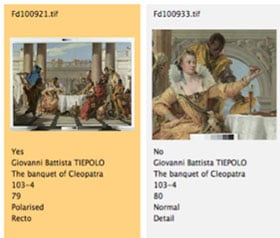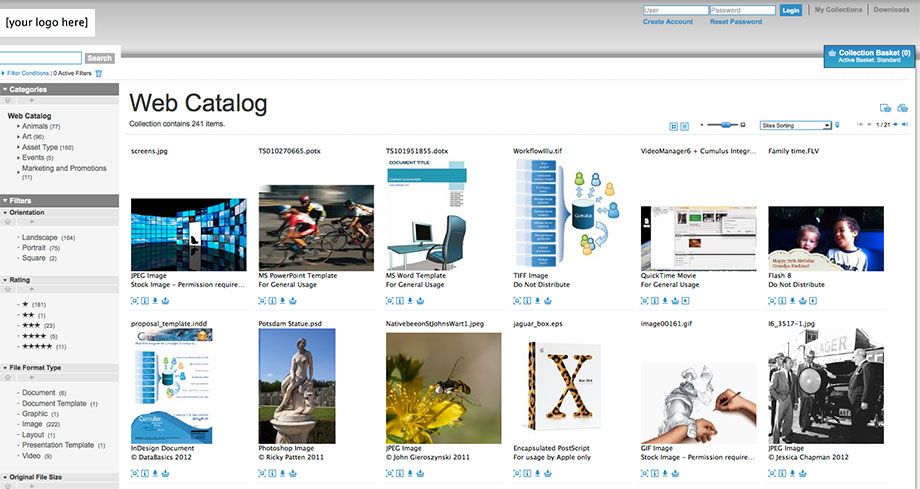Digital Asset Management: What is it and why is it important for GLAMs
November 1, 2015 •Antra Silova

DAMs, GLAMs and Collection Management

When you work in an industry for quite some time, it’s easy to start talking in acronyms and code. In our sector we often use DAM, CMS and GLAMs in conversation but our interpretation may be quite different to yours, especially if you work in marketing or design where CMS in particular has a very different meaning.
In this case, CMS refers to Collection Management System, eg Vernon, and it’s a tool that’s used widely by Galleries, Libraries, Archival organisations and Museums (GLAMs) to record all the details of their precious collections. It’s very different to the CMS of Content Management Systems such as WordPress which are used to manage the back end of your website.
Within the GLAMs sector, Information and Records Managers play an important role in managing and maintaining historical records and all business information. In the past this related to documenting physical collections and artifacts and storing text-based data about each item in a CMS. With the rise in digital imaging and the need to now manage images, photos, graphics and presentations, an emerging trend is the integration of CMS with DAM – Digital Asset Management solutions.
What is DAM?
For those of you new to the term, Digital Asset Management means taking a structured and organised approach towards managing your digital data and digital records. It’s a process that enables you to recall these digital assets on demand using powerful search and retrieve tools while converting your digital files into multiple end-user formats.
When we talk about digital assets, this includes anything of value to an organisation and most commonly includes a combination of images, movies, documents, design files and audio. Creating, managing, publishing and preserving these assets is now a core business function for all types of companies and organisations. It is particularly relevant for GLAMs and historically lives within the records department where artefacts and collections are housed and recorded. However, with the proliferation of digital media, we’re seeing this extend to the marketing department where company collateral is generated and brand management issues occur. DAM is at the core of what we do, but we understand our software needs to talk with other systems to achieve your broader objectives in a seamless and user-friendly way.
We already use a CMS, why do we need a DAM solution?
Collection Management Systems are used to standardise the cataloguing and recording of physical collections and archives, so while the two solutions are similar in their underlying objectives, they each play a distinct role in business operations.
The difference is that DAM actually manages, stores and enables fast retrieval of your digital asset content while the CMS allows you to record the assets, so when you put the two together you have a powerful research and operations tool at your disposal.


Above: Sample record details featuring the Canto Cumulus DAM Solution.
Digital Asset Management (DAM) means taking a structured and organised approach towards managing your digital data and digital records. DAM solutions allow you to store, research, discover and re-use digital assets from your collections.
Aside from the operational advantages of compliance and risk management, recording an object as a digital asset in both your DAM and CMS serves to increase its intrinsic value. This is because the information attached to the asset provides it with meaning and context.
Meaningful information about your objects and digital assets can enhance their intrinsic value and help you demonstrate their value to investment partners, industry stakeholders and the wider community.
Regardless of the sector that you’re in, GLAMs are an interesting case to examine as prior to implementing DAM, there are common problems faced by each of our clients:
- Collection images are stored in a single file format and are not able to be converted by gallery or museum staff without the assistance of a graphics team member;
- Images are housed in a single location and are unable to be shared with external partners;
- Files are often duplicated, out of date or used for an inappropriate purpose;
- It is difficult to control issues relating to copyright and the misuse of restricted archival images by internal and external parties.
Although you may work in a different industry, these problems remain relevant as there’s an equivalent challenge faced in every sector.
Useful Resources
Collections Trust SPECTRUM Digital Asset Management Resources
Museums Australia [Victoria] (2009), The Small Museums Cataloguing Manual, 4th Edition (PDF)
Cumulus and integration – Canto Integration Platform
Cumulus at NGV – YouTube video


